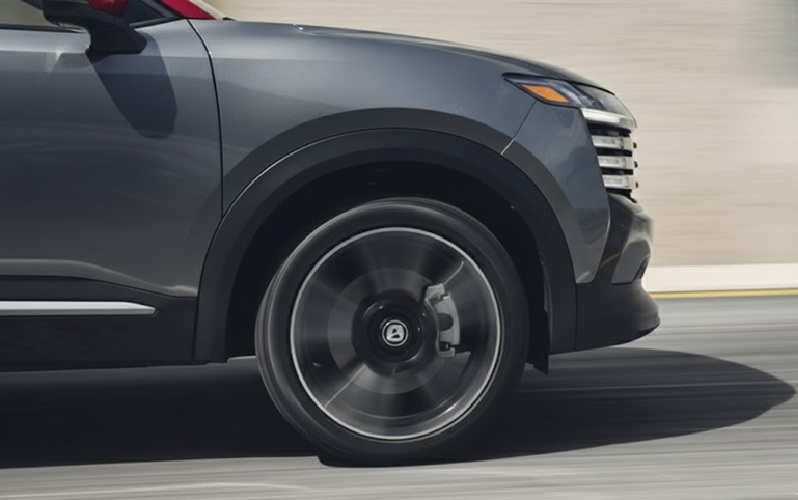Transmission Warning Lights on Your Nissan Kicks Dashboard
When you’re cruising down the highway in your Nissan Kicks and suddenly a warning light illuminates on your dashboard, it can be alarming. Among these indicators, transmission warning lights deserve special attention as they can signal potential issues with your vehicle’s Continuously Variable Transmission (CVT). Understanding what these lights mean could save you from costly […]
When you’re cruising down the highway in your Nissan Kicks and suddenly a warning light illuminates on your dashboard, it can be alarming. Among these indicators, transmission warning lights deserve special attention as they can signal potential issues with your vehicle’s Continuously Variable Transmission (CVT). Understanding what these lights mean could save you from costly repairs and ensure your safety on the road.

The Nissan Kicks, with its efficient CVT transmission, is designed to provide smooth acceleration and optimal fuel economy. However, like any mechanical system, the transmission can experience issues that trigger dashboard warnings. These warning lights are your vehicle’s way of communicating that something requires attention.
Common Transmission Warning Lights on Nissan Kicks
The most common transmission-related warning light on your Nissan Kicks is the malfunction indicator light, often called the “Check Engine” light. While this light can illuminate for various reasons, transmission issues are a frequent cause in vehicles equipped with CVT technology. When this light comes on, your vehicle may also enter “limp mode,” limiting performance to prevent further damage.
Another important indicator is the transmission temperature warning light. This light specifically warns that your fluid is overheating, which can occur during heavy towing, driving in extreme temperatures, or when there’s an internal problem. If ignored, overheating can lead to serious damage.
Some Kicks models also feature a specific CVT warning light, which directly indicates a problem with the transmission system. When this light illuminates, it’s crucial to have your vehicle inspected promptly by a qualified technician.
Dashboard Light Colours
Nissan uses a colour-coded system to help drivers understand the severity of warnings:
- Green lights indicate normal operation or that a system is currently engaged
- Yellow or amber lights suggest caution and indicate issues that need attention soon
- Red lights signal critical problems requiring immediate action for safety reasons
What Causes Transmission Warning Lights?
Several factors can trigger warning lights in your Nissan Kicks:
- Low Transmission Fluid: Insufficient fluid levels can cause overheating and poor performance.
- Transmission Fluid Degradation: Over time, fluid breaks down and loses its protective qualities.
- Faulty Speed Sensors: The transmission relies on input from various sensors to operate correctly. When these sensors fail, warning lights may appear.
- Solenoid Issues: Transmission solenoids control fluid flow. Malfunctioning solenoids can disrupt shifting patterns.
- Internal Mechanical Problems: Worn components can trigger warning lights as performance deteriorates.
- Electrical System Faults: Wiring problems or electrical issues can cause false warnings or prevent proper operation.
What to Do When Transmission Warning Lights Appear
If a warning light illuminates on your Nissan Kicks dashboard, take these steps:
- Check for Other Symptoms: Note any unusual noises, vibrations, or performance changes. This information will help diagnose the problem.
- Consult Your Owner’s Manual: Your vehicle’s manual contains specific information about warning lights and recommended actions.
- Check Fluid: If possible and safe to do so, check the fluid level and condition.
- Reduce Strain: Drive cautiously, avoiding rapid acceleration or heavy loads.
- Have Your Vehicle Inspected: Schedule a professional inspection as soon as possible, especially if the warning light is red or if the vehicle is performing poorly.
When dealing with warning lights, prompt attention is crucial. Minor issues can quickly escalate into major repairs if ignored. Regular maintenance, including fluid checks and changes according to your owner’s manual recommendations, can help prevent many common transmission problems.
Understanding the warning signs and taking appropriate action can extend the life of your Nissan Kicks transmission and ensure your driving experience remains smooth and trouble-free for years to come.
Things You Probably Didn’t Know About Nissan Kicks Transmission Warning Lights
• The CVT in Nissan Kicks uses a special type of fluid that should never be mixed with conventional automatic transmission fluids.
• Some transmission warning lights may temporarily illuminate during extreme driving conditions, such as steep hill climbs in hot weather, without indicating an actual mechanical problem.
• A simple software update to the control module can resolve many issues that trigger warning lights.
• The Nissan Kicks onboard diagnostic system stores detailed information about transmission issues even after warning lights disappear, which technicians can access during maintenance.
• The Turbine Input Shaft Sensor (which can trigger code P0715) is one of the most common causes of warning lights in the Nissan Kicks.
Common Questions About Nissan Kicks Transmission Warning Lights
What does it mean when the check engine light comes on in my Nissan Kicks?
- While the check engine light can indicate various issues, it often relates to the CVT system. You should have the vehicle diagnosed promptly, as continuing to drive could worsen the problem.
Is it safe to drive my Nissan Kicks if the transmission warning light is on?
- It depends on the specific light and its colour. Yellow lights indicate caution but may allow limited driving to reach service. Red warning lights require immediate attention, and you should minimize driving to prevent damage.
How often should I change the transmission fluid in my Nissan Kicks?
- Follow the maintenance schedule in your owner’s manual, which typically recommends CVT fluid inspection every 20,000 km and replacement intervals around 60,000 km under normal driving conditions.
What is “limp mode” in the Nissan Kicks?
- It is a protective function that restricts vehicle performance when the computer detects a serious problem. It typically limits the transmission to second gear and reduces power to prevent further damage.
Can transmission warning lights come on due to extreme weather?
- Yes, extremely cold or hot weather can affect performance and trigger warning lights, especially if the fluid level is borderline low or the fluid is degraded.
What does the P0715 code mean for my Nissan Kicks?
- This code indicates an issue with the Turbine Input Shaft Speed Sensor, which monitors the transmission input shaft’s rotation speed. It’s a common trigger for warning lights.
Can a battery issue cause transmission warning lights?
- Yes, low voltage from a failing battery can affect the control module and trigger warning lights even when the transmission itself is functioning normally.
How much does it typically cost to diagnose a transmission warning light?
- Diagnostic fees vary, but most service centres offer diagnostic services that include reading the error codes stored in your vehicle’s computer system.
Will my Nissan Kicks be covered under warranty for transmission issues?
- Many vehicles have powertrain warranty coverage that includes the transmission for a specific period or distance driven after the purchase date.
Can I reset the transmission warning light myself?
- While disconnecting the battery may temporarily clear some warning lights, this doesn’t fix the underlying issue. Professional diagnosis is recommended as the light will likely return if a problem exists.


